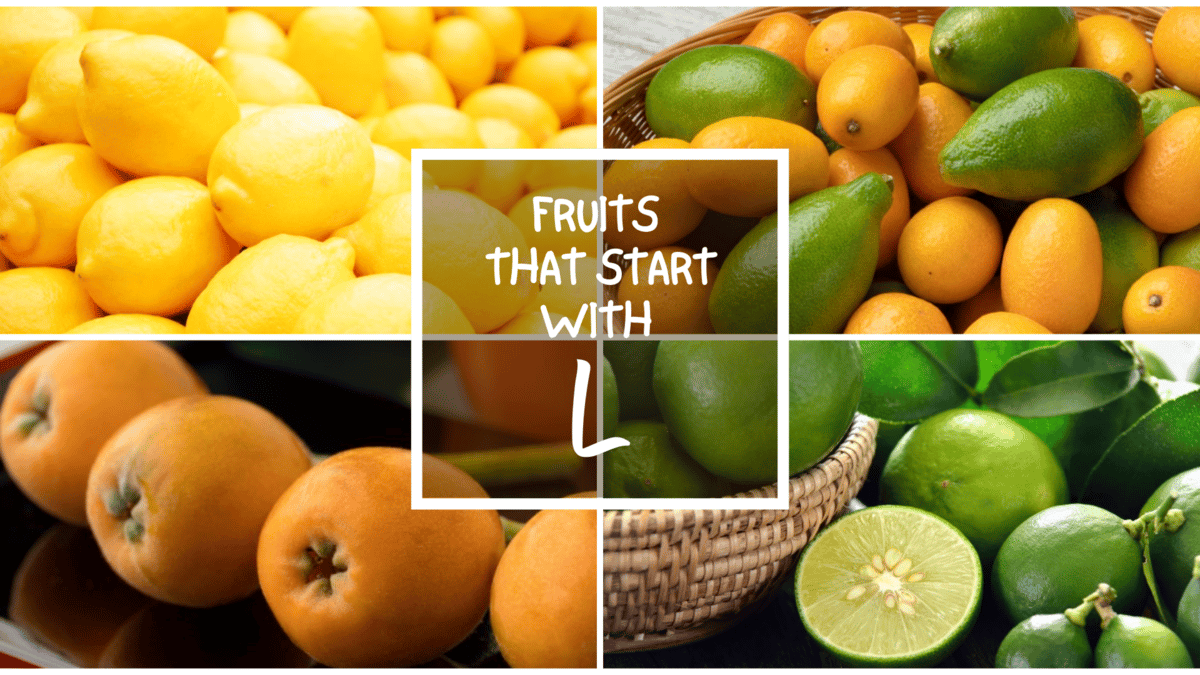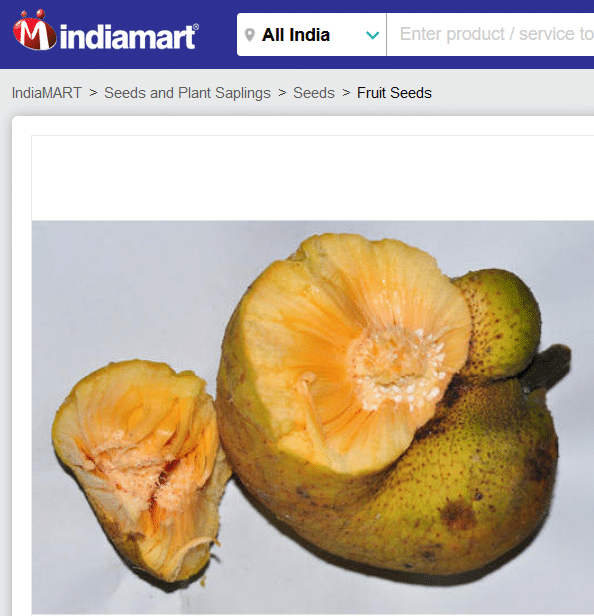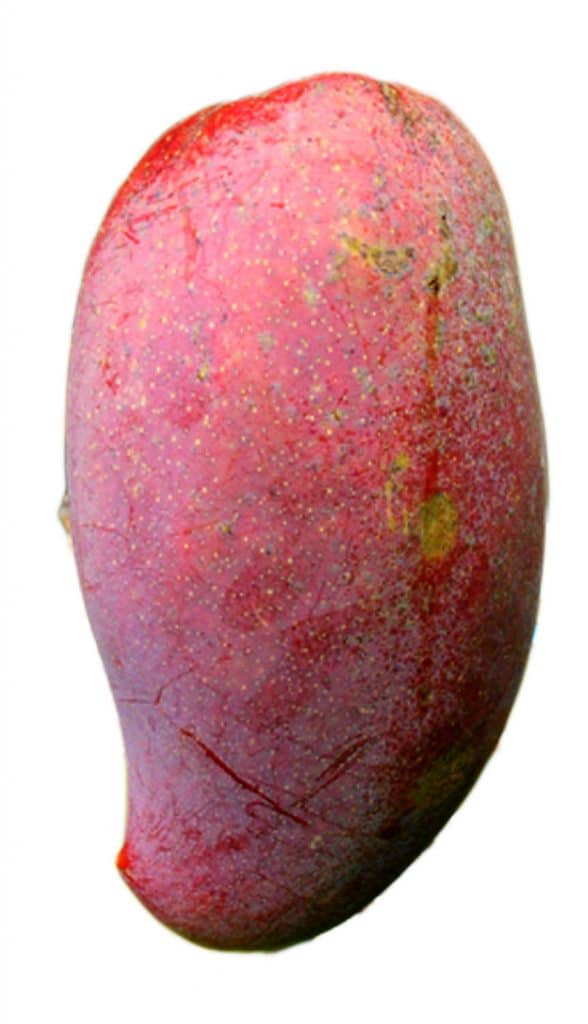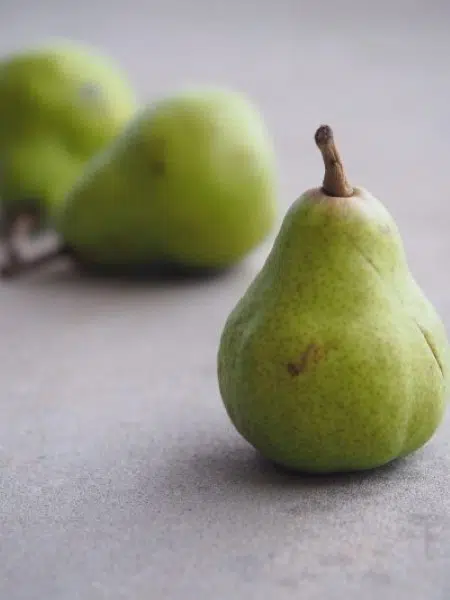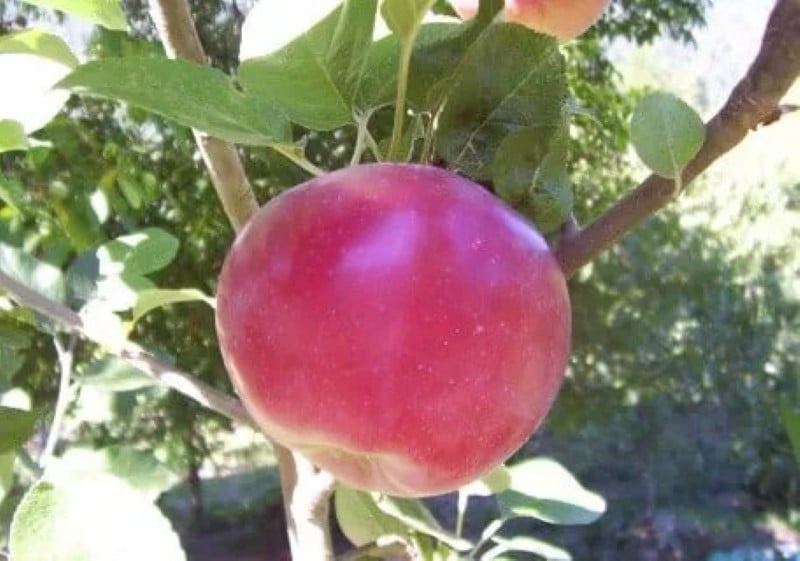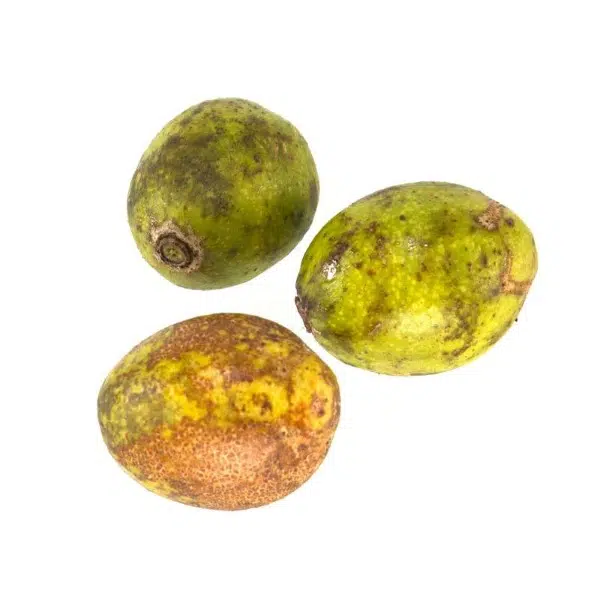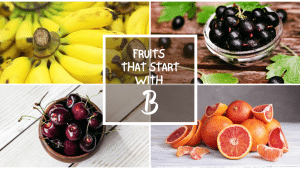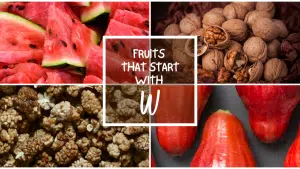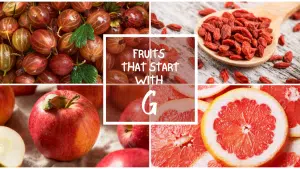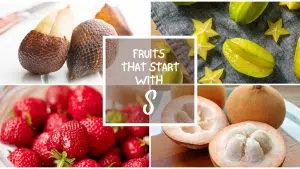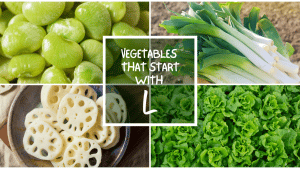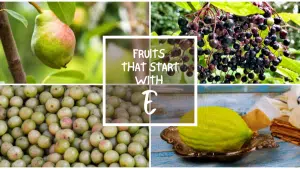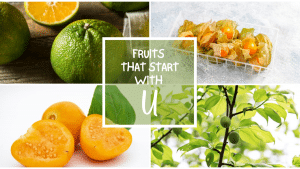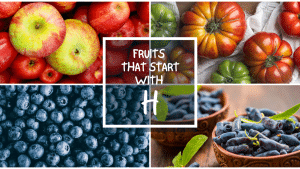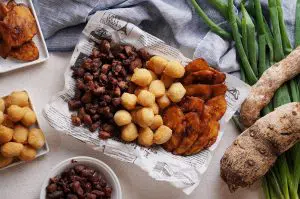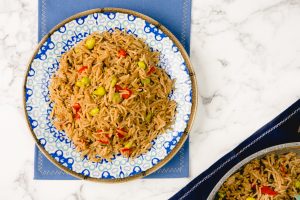All The Fruits That Start With L
Important Note: When you buy through our links, we may earn a commission. As an Amazon Associate we earn from qualifying purchases. Content, pricing, offers and availability are subject to change at any time - more info.
From tart to sweet and sour to citrusy, the fruits on this list run the gamut. If you ever tried to come up with a list of fruits that begin with L, you likely went straight to lemons and limes before getting stumped. The truth is, many wonderful and obscure fruits begin with the letter L. Take a look.
- Lady Apple
- Lakoocha
- Lancetilla Mango
- Langsat
- Langra Mango
- Le Conte Pear
- Lemons
- Liberty Apple
- Lingonberry
- Lime
- Limequat
- Lippens Mango
- Loganberry
- Loquat
- Lucuma
- Lychee
- Lapsi
- The Final Letter
Lady Apple

Native to Australia, the Lady Apple, or Malus domestica ‘Cripps Pink’, is a tree fruit hybrid between golden delicious and Lady Williams apples. Though lady apples grow in many regions worldwide, they necessitate hot, subtropical climates. In the early 90s, pink lady apples began being domestically cultivated in the US; as such, they are readily available in grocery stores when they’re in season.
Lady apples are the same size and shape as standard apples however the skin color is a marbling of red and yellow. The flesh of this apple is crisp and white; like other apples, the lady apple can be eaten whole except for its seeds. Lady apples are a common ingredient in pies, tarts, and other sweet treats, lady apples have a subtly sweet and mildly tart flavor. Lady apples are a wonderful addition to a well-rounded diet, they’re packed with potassium and vitamin C.
Lakoocha
This tropical tree fruit is native to the humid climes of India. Technically coined Artocarpus lakoocha, lakoocha also grows in Bangladesh, China, Laos, Nepal, and Vietnam. Although home growers could grow lakoocha in places such as Florida and Hawaii, this fruit isn’t commercially cultivated domestically. Furthermore, even though it isn’t sold in big grocery stores, lakoocha can occasionally be found in specialty markets; this fruit can also be shipped from online exotic fruit dealers.
Lakoochas are round and irregular in shape and their skin color is a marbling of green and orange. Roughly between six and 10 centimeters when fully ripe, the lakoocha has a pale yellow pulp that’s both sweet and sour. Typically, lakoocha is enjoyed fresh, however, it’s often used to pickle or make chutney. Finally, lakoocha is rife with nutrients such as antioxidants and phenolic acids, therefore a wonderful addition to your diet.
Lancetilla Mango
This mango variety originated in Honduras and goes by the scientific moniker Mangifera indica x Lancetilla. This tropical fruit was first introduced in South Florida in the early 2000s and as a result, the lancetilla mango is commercially sold in the US.
When fully ripe, the lancetilla mango is rather large, in some cases weighing as much as five pounds! The lancetilla mango’s skin is red, however, inedible. This mango variety’s flesh is a vibrant yellow and fleshy though not fibrous. Of note, lancetilla mangoes are eaten the same way standard mangoes are eaten: skin peeled and fleshy pulp scooped out. Lancetella mangoes are very sweet with tropical undertones. Finally, these delicious mangoes are packed with nutrients such as phosphorus, ascorbic acid, and tryptophan, making them a great addition to a balanced diet.
Langsat
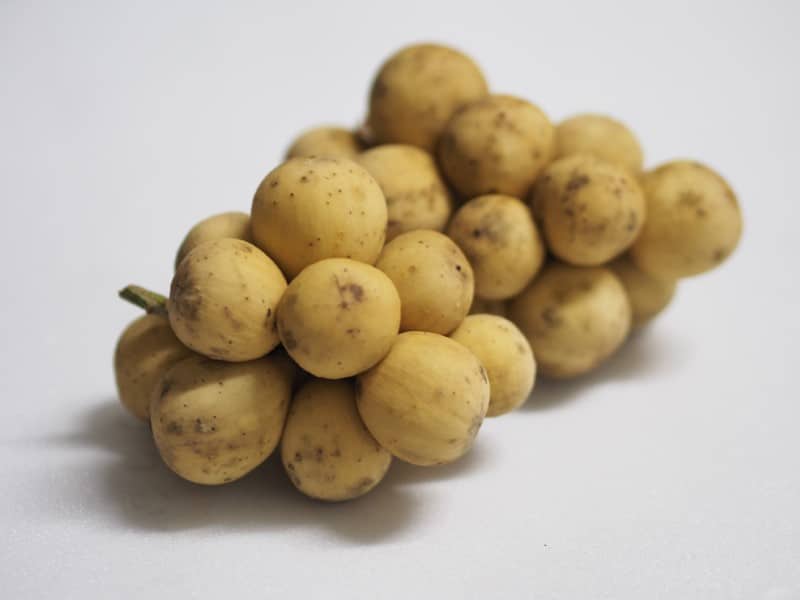
The langsat, or Lansium parasiticum, is an Indonesian tree fruit that’s native to Southeast Asia; it’s common in countries such as Malaysia and the Philippines. The lanzone tree, from which the langsat is harvested, can be domestically grown in warm US climates such as south Florida and Hawaii.
The langsat is a small, egg-shaped fruit that resembles a potato in texture and color. The langsat can be compared in taste to a pomelo; its flesh is refreshing with both sweet and sour flavors; its notes are reminiscent of bananas or grapes. Typically, langsats are eaten fresh; their skin can be easily peeled back with your fingers and the ripe segments, which are bite-sized, are an easy and nutritious snack to pop into your mouth. Speaking of nutrition, langsats are fraught with vitamin A which supports eye, skin, and skeletal health, as well as riboflavin which is good for producing red blood cells.
Langra Mango
This popular variety of mango is scientifically known as Mangifera ‘Langra’ and it hails from Varanasi, Uttar Pradesh. The langra mango is primarily cultivated in parts of India such as Varanasi, Banaras, and Malda. There happens to be one commercial grower of the langra mango in the US; it’s called Savani Farms and it’s in Washington, Pennsylvania. As such, this mango variety can be found in specialty stores throughout the US as well as ordered directly from this domestic grower.
The langra mango is similar in size, shape, and texture to the standard mango, however, its skin is pale green like a pear when it’s fully ripe. The langra mango is eaten just like a standard mango, with the flesh scooped out of the skin. The langra mango is fibrous, super sweet, and supple in texture. Langra mangoes are a common ingredient in Indian cuisine and can be found in recipes such as mango lassi and mango kulfi. Lastly, it is loaded with potassium and magnesium.
Le Conte Pear
Indigenous to Southeastern Europe, the Le Conte pear, or Pyrus communis x pyrifolia as it’s scientifically known, was a favorite fruit of the ancient Greeks. Today, the Le Conte pear grows all over the US in states such as California, New York, Oregon, and Pennsylvania. As a result of its widespread domestic cultivation, the Le Conte Pear is easy to procure in the US.
This variety of pear is similar in size, color, and shape to the standard green pear. Its flesh is creamy and white and, like the skin, is entirely edible except for the seeds. The Le Conte pear is subtly sweet and is commonly eaten fresh and cooked. It’s the star of many delectable recipes such as pear pie, pear cake, poached pears, and pear cobbler. The Le Conte pear is a highly nutritious fruit as it’s packed with fiber, potassium, copper, and vitamins C and K.
Lemons
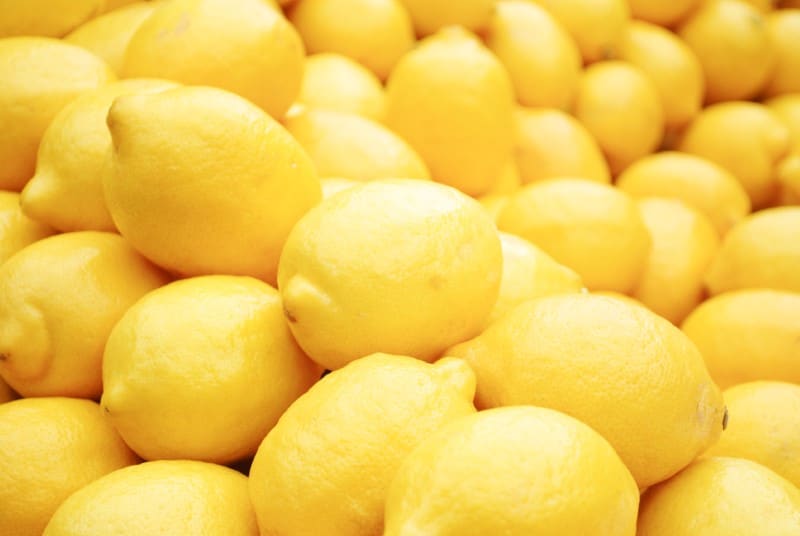
The lemon, or Citrus lemon as it’s technically called, is a tree fruit that’s native to parts of Asia such as Myanmar and China. Today, lemons are predominantly cultivated in Mediterranean countries like Italy, Spain, Morocco, and Lebanon. However, they are also cultivated domestically in the US in states with climates similar to the Med, namely California and Arizona. Lemons are so popular that they can be purchased nearly anywhere in the US; from grocery stores to liquor stores and gas stations to convenient shops, lemons are readily available in the US.
Lemons are bright yellow and round with an inedible rind and juicy pulp. Lemons have a strong citrusy sour flavor that adds the perfect amount of acid to fish dishes, beverages, and well beyond. Lemons are sometimes served as garnishes and at other times as the star of the recipe; it’s also quite common to juice lemons. Lemons aren’t typically eaten whole, but they’re a great source of fiber and vitamin C as well as other worthy nutrients.
Liberty Apple
The liberty apple is a hybrid apple that was first cultivated in New York in the mid-50s. It’s cultivated in mid-September through the fall. They thrive in a moderately warm climate so they flourish in the summer months. As a New York native, the liberty apple, when in season, can be easily purchased throughout the US.
The liberty apple has vibrant red skin and is akin in size, shape, and appearance to the McIntosh variety of apples. Both the skin and white, crisp flesh are edible whole so long as you avoid the seeded core. Like other varieties of apples, the liberty apple is a mildly sweet fruit to enjoy whole or to cook in pastries. Fraught with nutrients such as dietary fiber, vitamin C, and iron, these apples make for a healthy snack.
Lingonberry
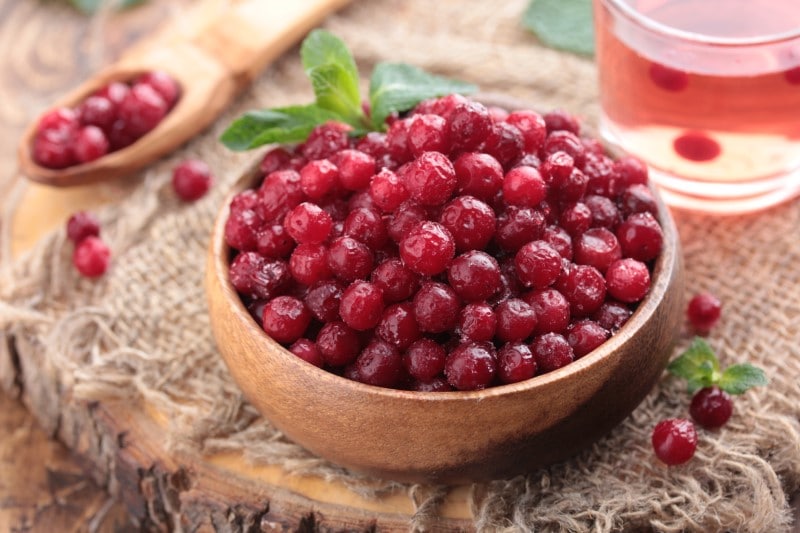
Vaccinium vitis-idaea, or lingonberries, are native to northern Europe. Notably, lingonberries are grown in Scandinavia, Canada, Alaska, and other parts of the US. Furthermore, lingonberries flourish in cool climates and are typically planted in the late spring; they can also be grown in pots. When in season, they can be found in specialty stores and farm stands, however, they can also be ordered online either fresh or frozen.
Lingonberries look just like cranberries; they’re akin in size, shape, and color. Lingonberries are tart like cranberries with a touch more of sweetness. They’re not an enjoyable fruit to consume whole although they can be mixed with other ingredients to add tartness to a dish. Lingonberries are popular in Swedish dishes such as meatballs and cabbage rolls. Lingonberries are rife with antioxidants, fiber, and polyphenol all of which promote health benefits such as lowering blood sugar, improving gut health, and aiding in weight control.
Lime

Citrus × aurantiifolia, better known as lime, is thought to have originated in either India or northern Malaysia. Today, lime is cultivated globally in tropical and subtropical climates. In the US, limes thrive in Florida, California, and the Gulf Coast. Just as common as its colorful counterpart, the lemon, the lime can be purchased all year long in all sorts of food stores.
Limes are small, round, and green, typically measuring between one and one-and-a-half inches in diameter. The rind of the lime is not eaten whole, but it’s not uncommon to zest it as a garnish for a burst of citrus. Speaking of citrus, limes are tart and acidic with a touch of sweetness. Like lemons, limes are typically not eaten whole but rather used for their juice. Lime is the star of many drink recipes such as margaritas and limeade as well as a tart additive to savory dishes. Lastly, limes are composed of nutrients such as vitamin C, fiber, iron, and calcium.
Limequat

This citrus fruit whose scientific name is Citrofortunella × floridana is native to Eustis, Florida. The limequat thrives in tropical and subtropical climates and is now cultivated in Spain, Malaysia, Japan, Israel, and South Africa; in the US, the limequat is also grown in Arizona, California, and Texas. Within the domestic regions where the limequat is grown, these fruits are readily available in grocery stores, however, if you’re located in other parts of the country, you can easily purchase them from online retailers.
The limequat is easily confused with the standard lime as it’s nearly identical in size, shape, and color. Like the standard lime, the peel is inedible and the pulp is sweet and tart; its flavor profile is a blend of the key lime and kumquat, thus its name: limequat. Like standard limes, the limequat isn’t typically eaten whole; instead; it’s common to juice the limequat. Notably, the limequat is an excellent source of both vitamin C and folate.
Lippens Mango
The lippens mango is a variety that originated in Florida which is the only place they seem to grow today. The lippens mango tree, though lauded for its commercial potential, never took off commercially, however, it’s a common tree for home growers living in southern parts of Florida. The harvest season for lippens mangoes is mid-to-late-summer.
The lippens mango is similar in shape and size to a standard mango, however, its skin, when fully ripe, is a golden yellow. The flesh of this mango variety is a deep golden color and it’s overtly sweet and fibrous. The lippens mango is typically eaten fresh though it’s not uncommon to use in recipes like juices, chutneys, and salsas. The lippens mango is a nutritious snack that’s packed with antioxidants as well as vitamins A and C.
Loganberry

The loganberry, whose scientific moniker is Rubus × loganobaccus, is a cross between a blackberry and a raspberry. Loganberries are native to Santa Cruz, California, but also grow in Oregon, Washington, Australia, and parts of Europe. Loganberries grow best in mild climates and they’re sensitive to the cold. Notably, as a fruit indigenous to the US, loganberries can be purchased in grocery stores throughout the country when they’re in season.
Moreover, loganberries are the size, shape, and color of raspberries yet the texture of blackberries. These berries are full of flavor, an even blend between their parent berries, and sweet with a hint of tartness. Of note, loganberries are a great snack to enjoy whole, but they’re also found in many sweet recipes such as jams, tarts, pies, and more. These bite-sized powerhouses are packed with nutrients such as manganese, vitamin C, iron, and folate.
Loquat
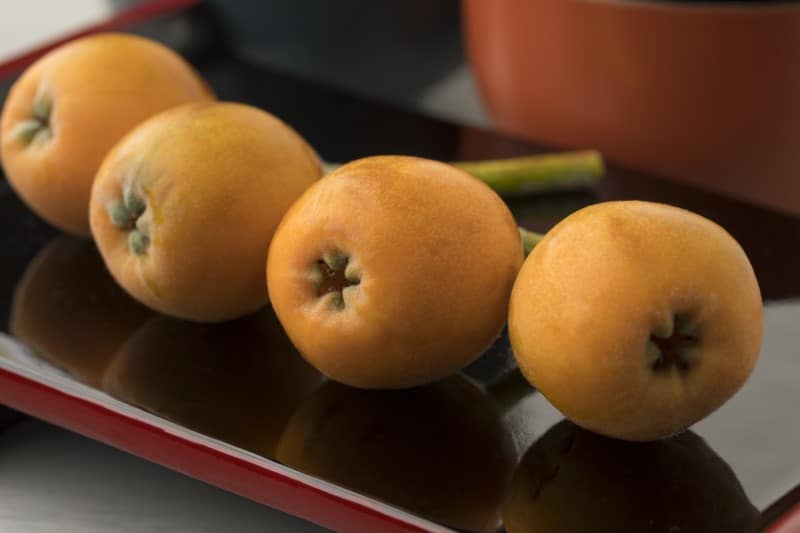
The Eriobotrya japonica, or loquat, is a subtropical tree fruit that originated in China. Cultivated throughout parts of Europe, Asia, Africa, the Middle East, and Australia, the loquat is a cluster fruit that grows on a variety of rose bushes. In the US, loquats are cultivated in Florida, California, and Hawaii, and can be purchased from specialty stores throughout the US or shipped from online distributors.
In appearance, the loquat is the size, color, and texture of an apricot, however, the shape of a pear. The loquat’s skin is inedible; it can be peeled off or cut into to enjoy the sweet, citrusy flesh. Though loquat is typically enjoyed fresh and it’s also used as a tea extract, jams, and in savory recipes. Loquats are a healthy addition to your diet as they’re packed with nutrients such as fiber, potassium, manganese, and vitamins A and B6.
Lucuma
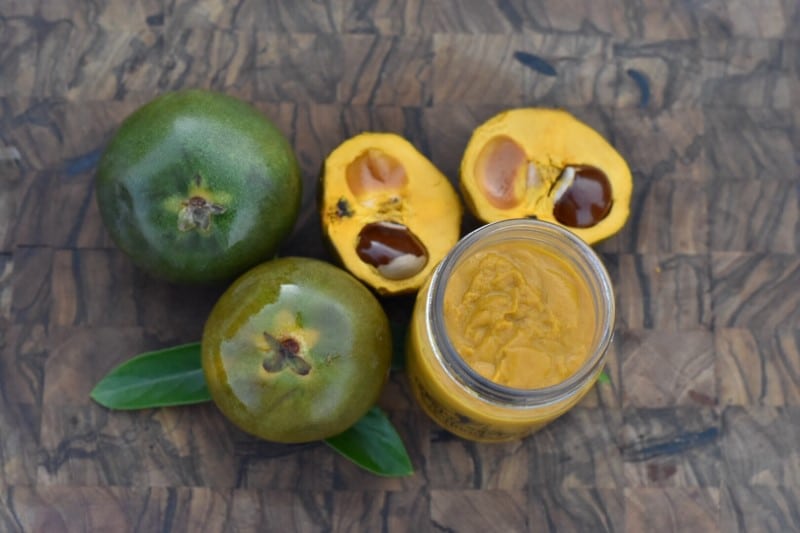
The Pouteria lucuma, or lucama, is a wild fruit that’s native to the South American Andes Mountain range. Lucama is known to grow in parts of Peru, Chile, and Ecuador. The lucama fruit thrives in mild climates with temperatures that don’t exceed 80℉. Some attempts to grow lucama commercially in the US have been unsuccessful, however, it’s domestically imported to Latin food markets.
Enveloped in a hard green, inedible shell, lucama looks like a mix of mango and avocado. The flesh of the lucama, which surrounds a big pit, is a sweet golden flesh and tastes similar to caramel. Lucama can be eaten fresh, powdered, or juiced. Lucama is highly nutritious; it’s high in fiber and is said to aid in digestion and prevent inflammation.
Lychee
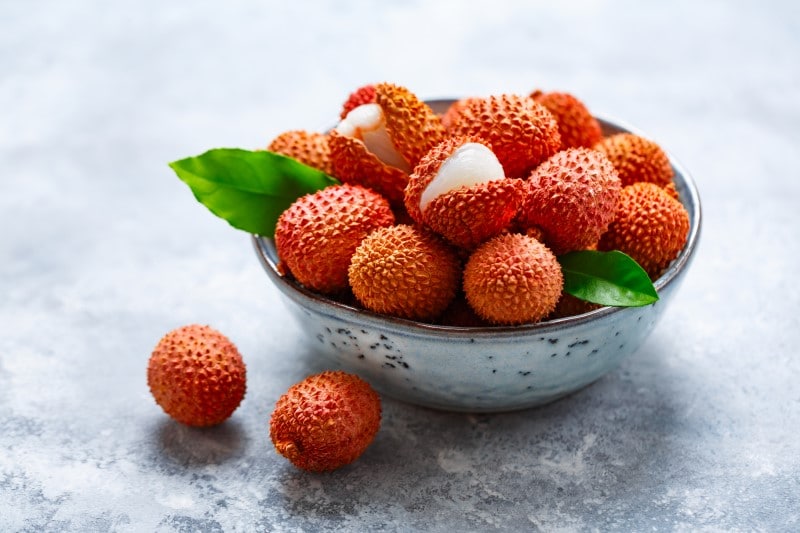
Litchi chinensis, commonly known as lychee, is an evergreen tree fruit that is indigenous to Southeast Asia. Lychee is cultivated commercially in many subtropical countries some of which include Australia, Brazil, India, Malaysia, and Mexico to name a few. Within the US, lychee is grown in Florida, Hawaii, and California. Lychee is harvested from late spring to early fall and can be easily found in grocery stores during that period.
Lychee is a golf ball-sized fruit that is similar in color and texture to a strawberry. The red, irregular skin encases white, fleshy pulp. Lychees are best consumed fresh; to eat them you simply peel the red skin back with your fingers and suck the flesh off the center seed. Lychee is a common ingredient in cocktails, custards, jellies, and savory dishes. A nutritious source of antioxidants, vitamins, and minerals, lychee is a wonderful addition to a well-rounded diet.
Lapsi
This subtropical fruit is native to Nepal and goes by the technical name Choerospondias axillaris. Outside of Nepal, lapsi grows in the Himalayas; it’s found in Thailand, Gautam, and Vietnam. Although lapsi is imported to the US for commercial distribution, it’s hard to come by, typically only sold in ethnic food stores.
The lapsi is akin to a plum in shape and size, however, it has a greenish-yellow skin. Notably, the skin is inedible but the pulp, which looks a lot like a grapefruit, is typically eaten whole. This Southeast Asian fruit is packed with healthy nutrients such as vitamin C and phenol, both of which enhance immunity.
The Final Letter
Whether you’ve stumbled upon this list out of sheer curiosity or you’re looking for something new to try, the L fruits are certainly worth a second look. Although some of these are not available domestically, many are. Next time you visit your local grocery store or farmer’s market keep your eyes peeled, pun intended, for some of these amazingly delicious and highly nutritious L fruits.
